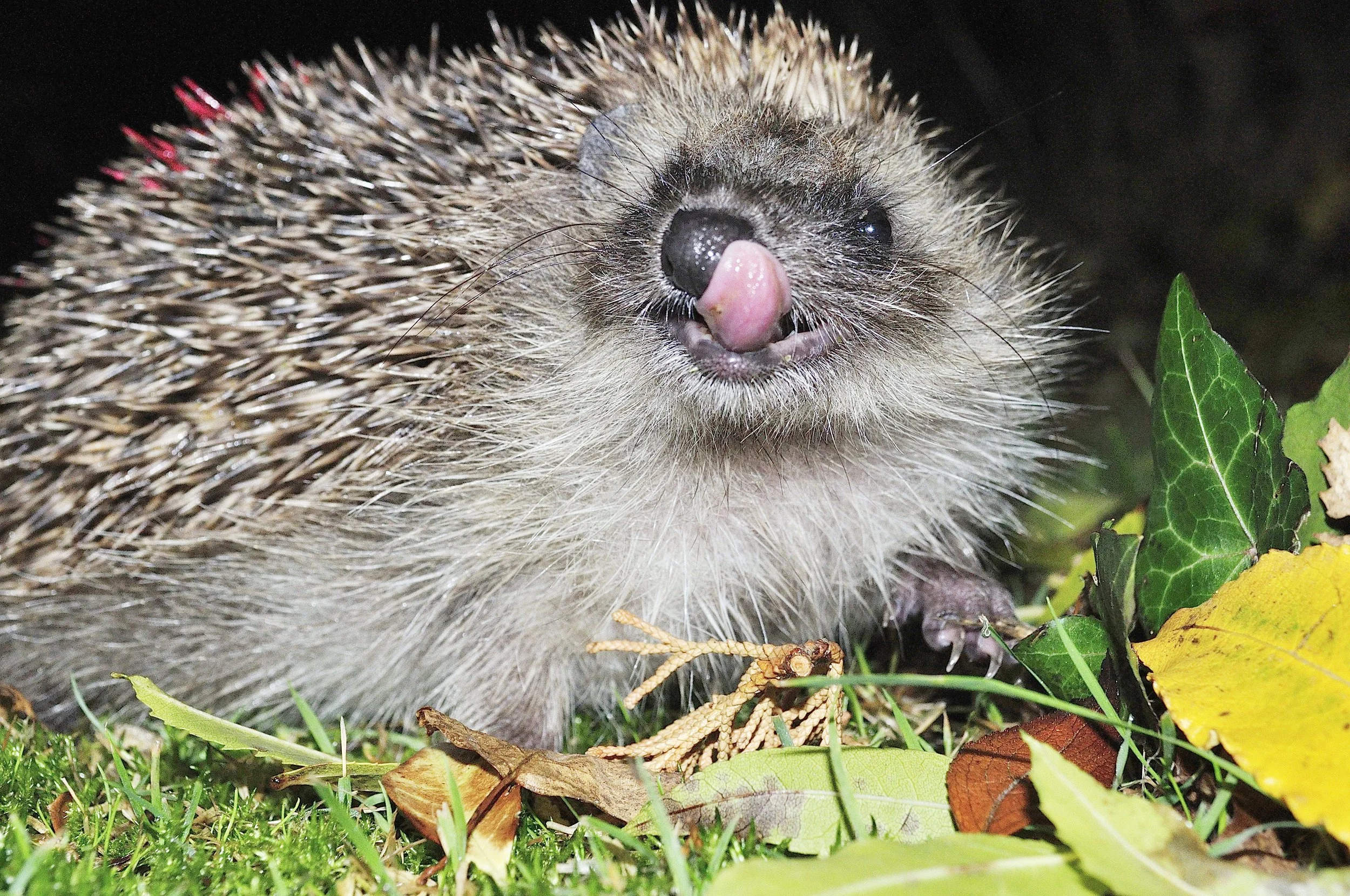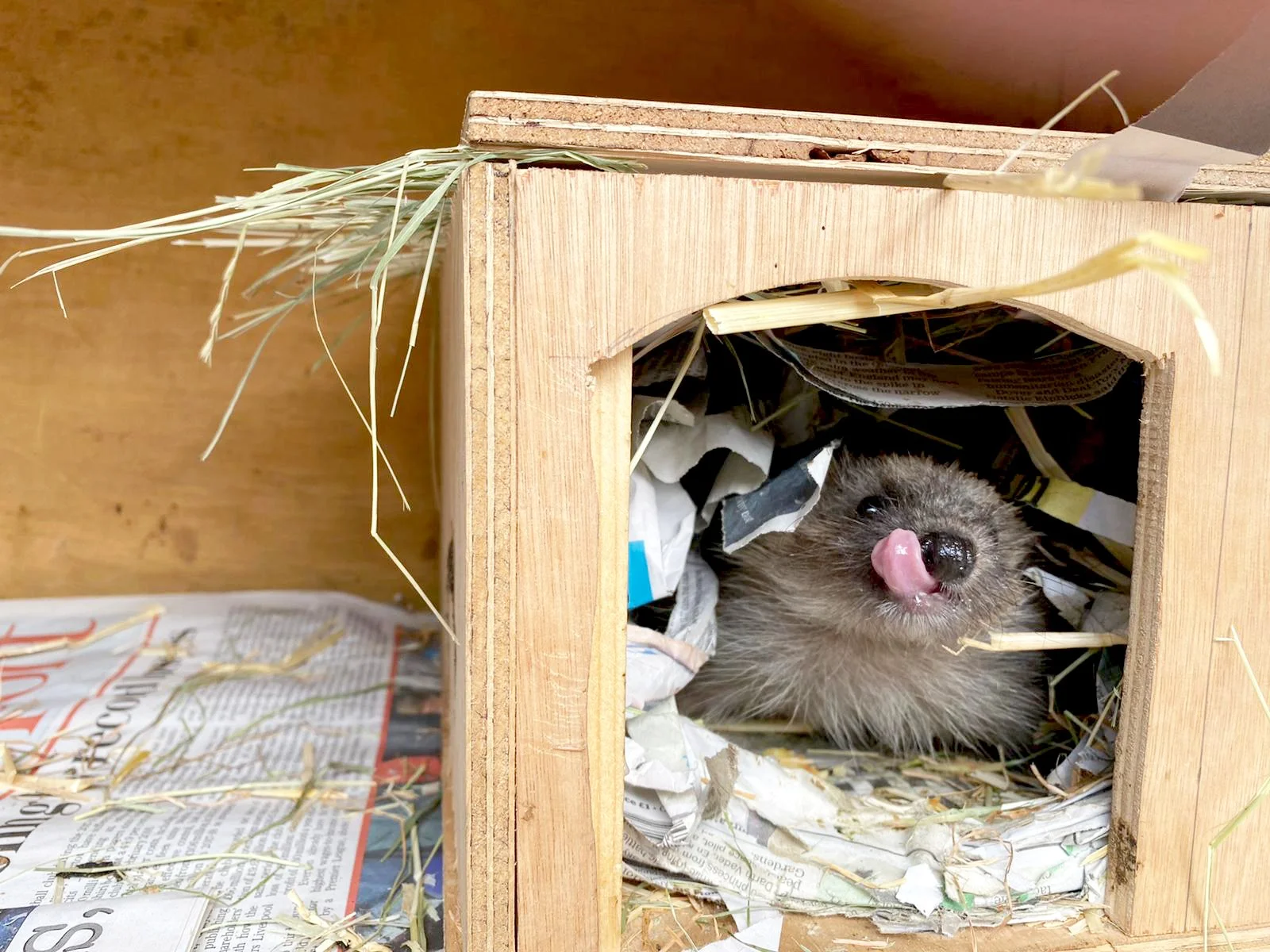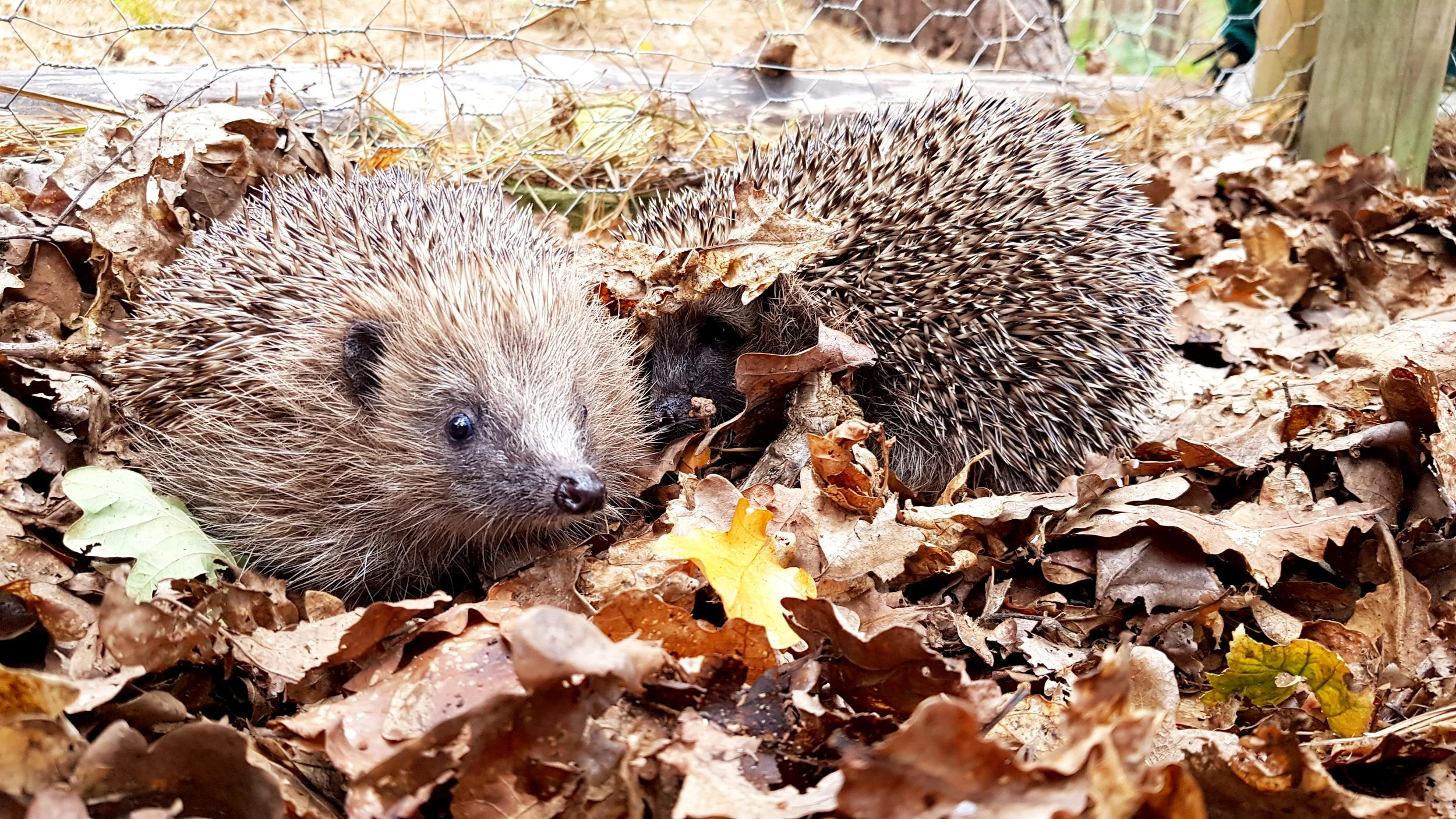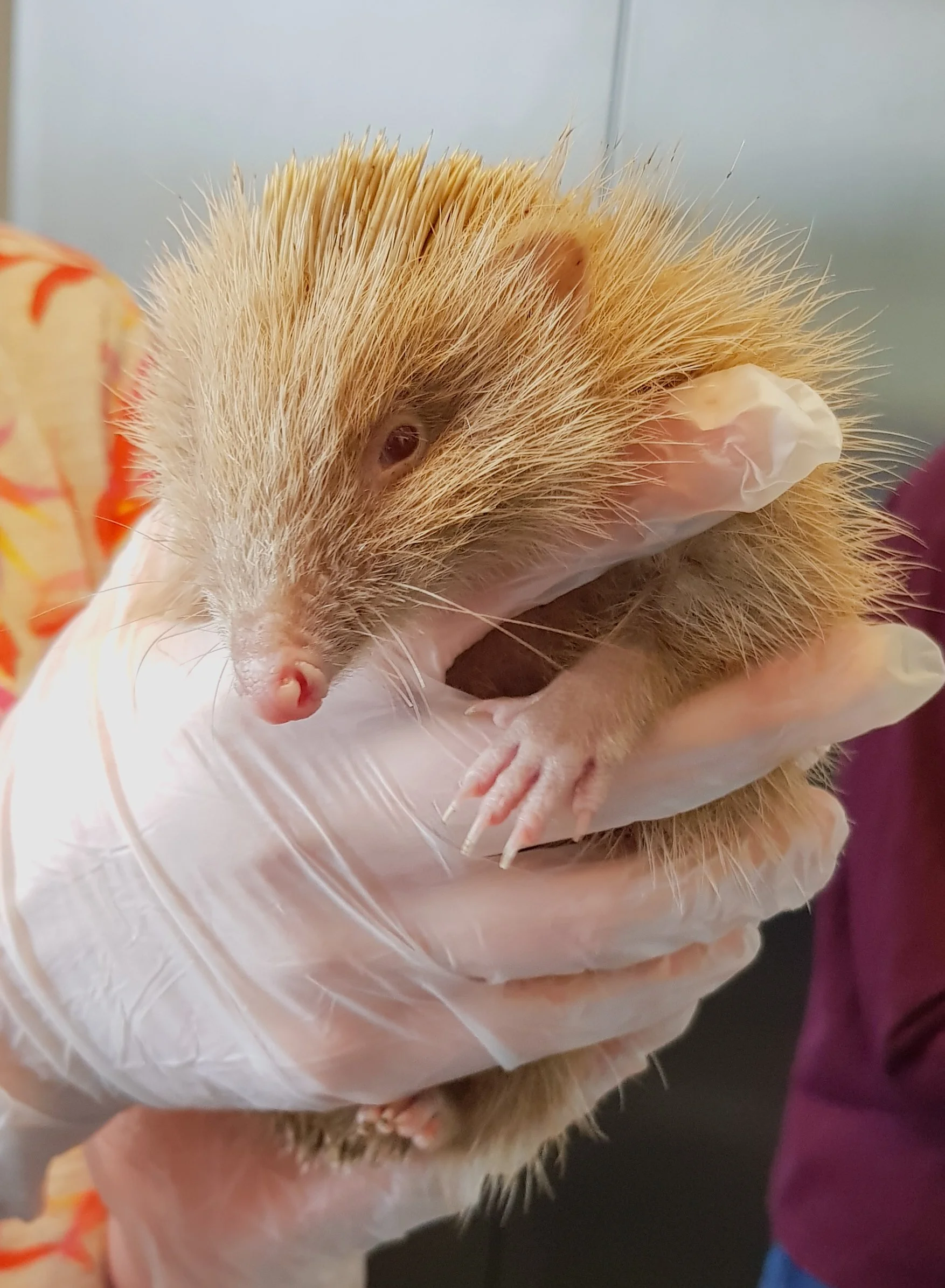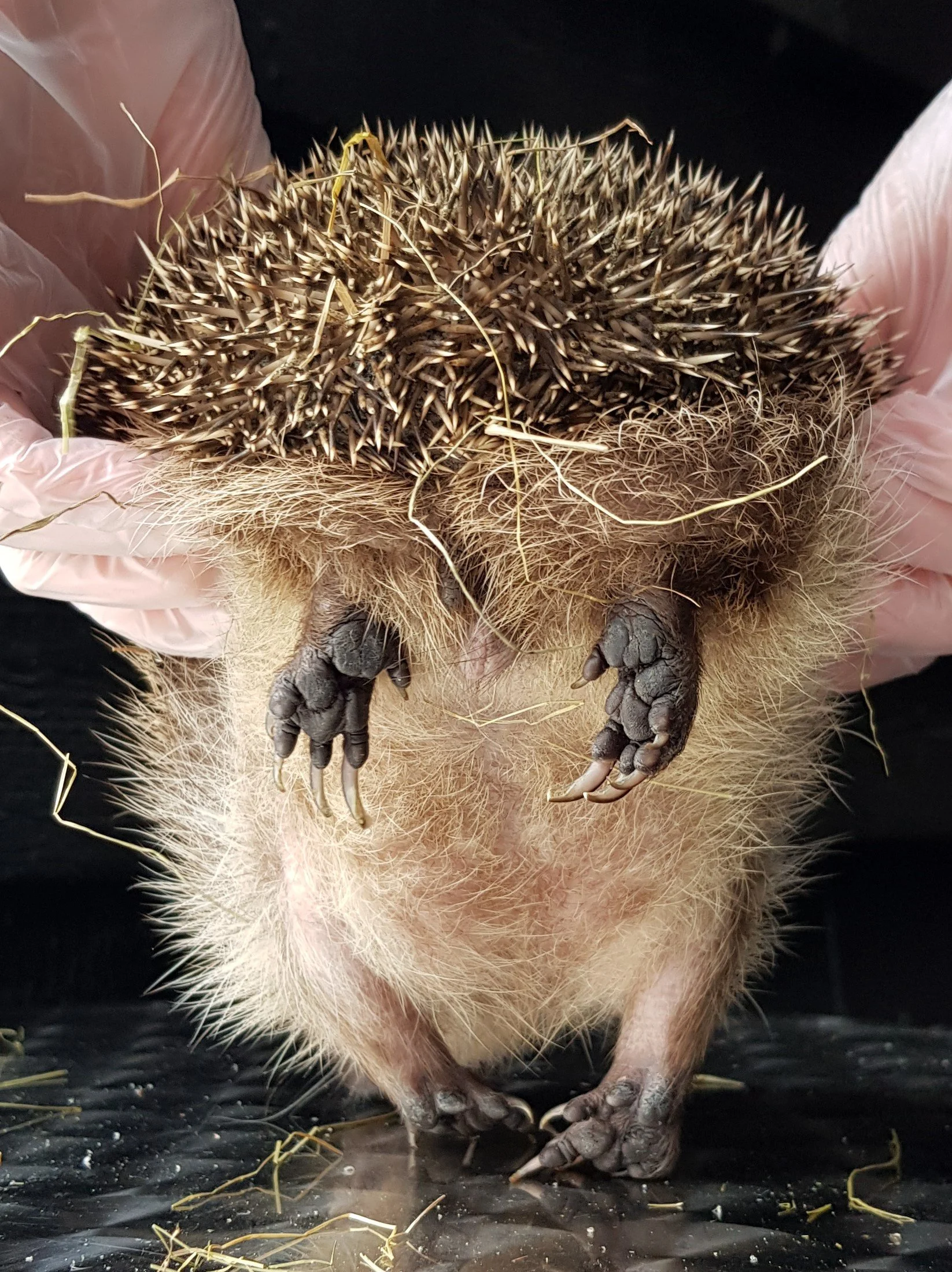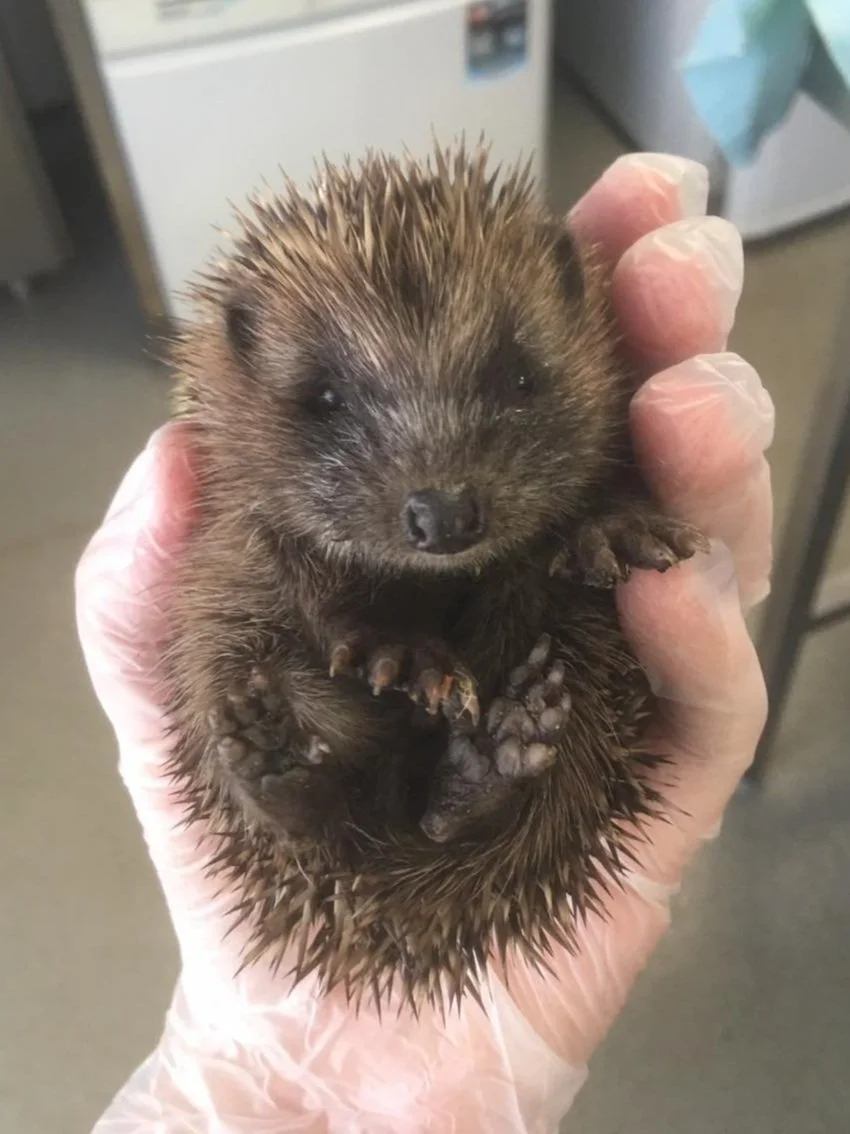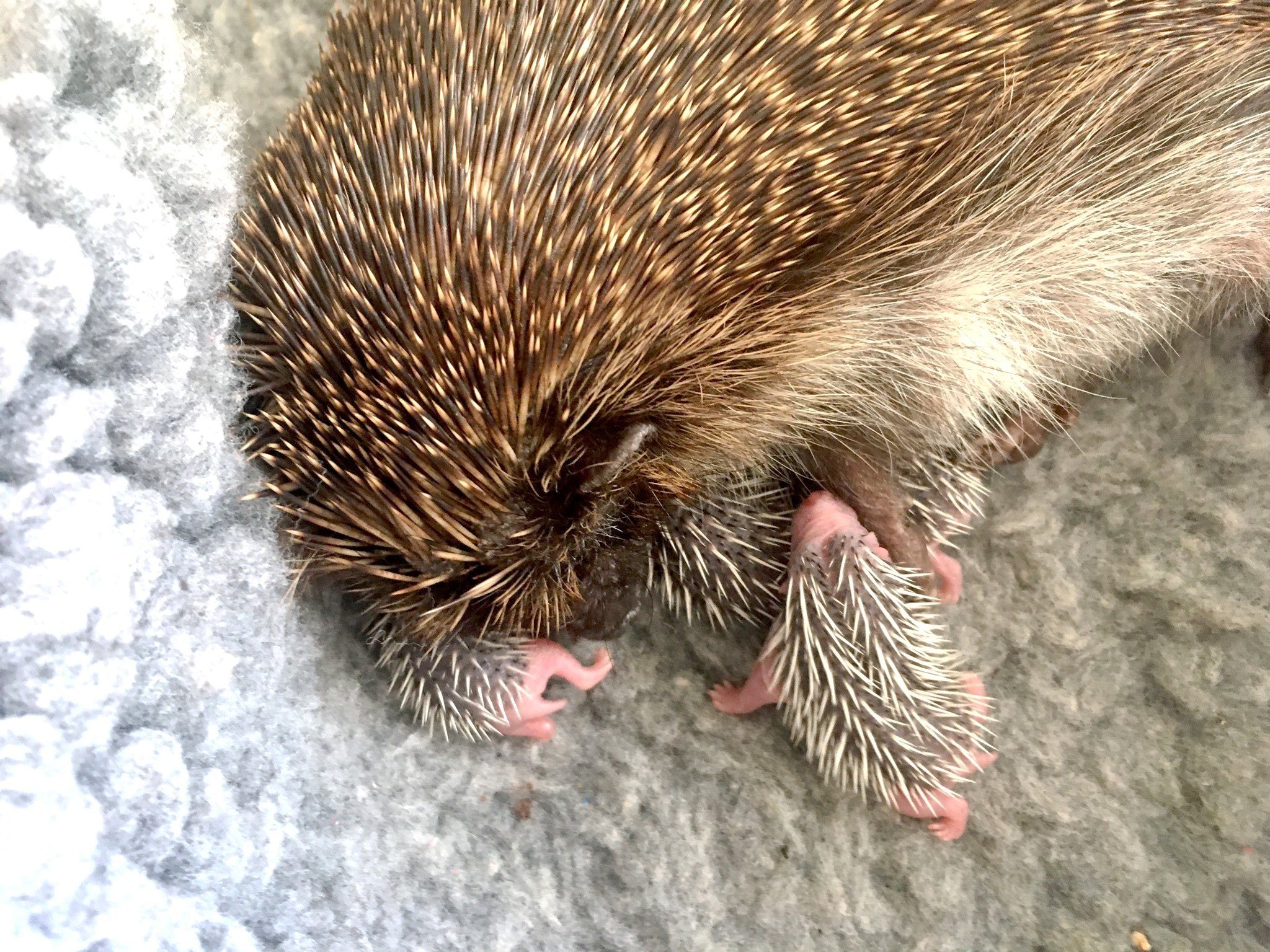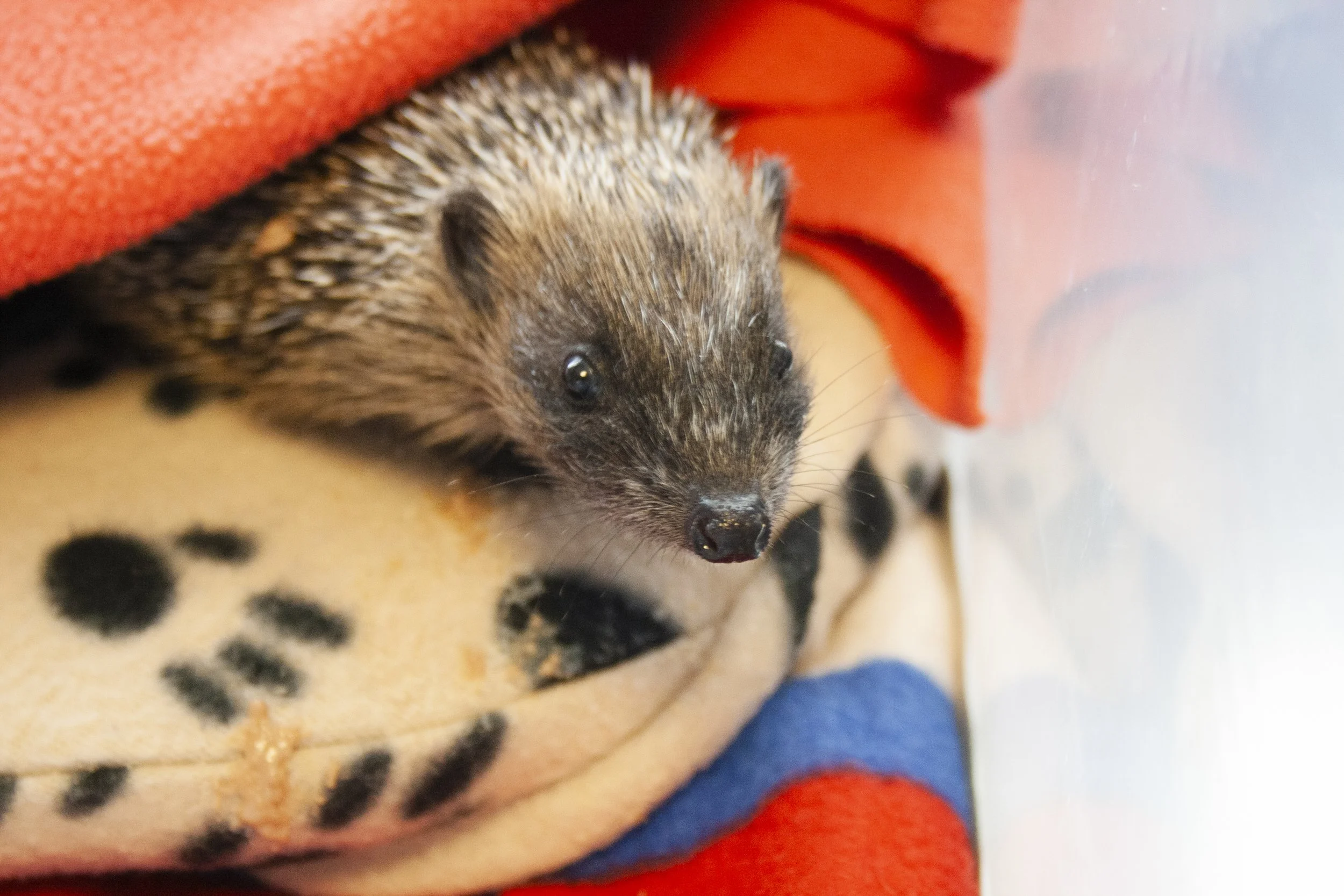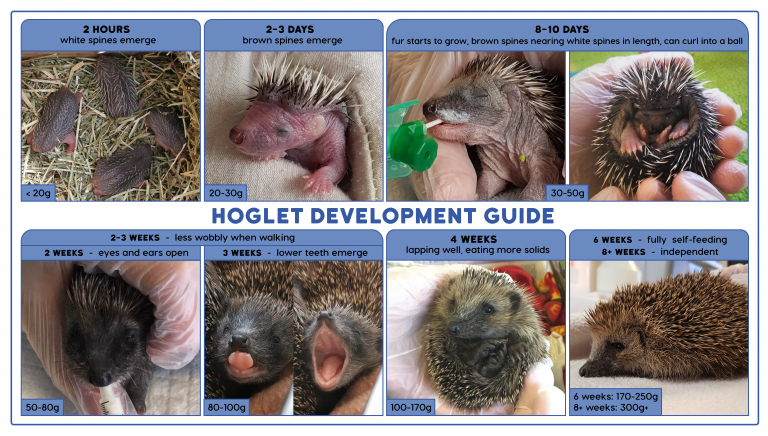
European Hedgehog Fact Sheet
Hedgehogs are small, spikey mammals that first evolved 15 million years ago. They have a long history and are a very interesting species. There are 19 species of hedgehog, across 5 genera worldwide*. The 5 genera of hedgehogs in the world are: Erinaceous, Paraechinus, Hemiechinus, Atelerix and Mesechinus*. The species native to Britain is the Western European Hedgehog.
*There have been debates as to whether Hemiechinus and Mesechinus should be seen as closely related to the other 3 genera, and more recently there are discussions into the Mesechinus genera having 4, as opposed to 2, distinct species https://www.ncbi.nlm.nih.gov/pmc/articles/PMC6102679/

General Facts
Western European Hedgehog
Scientific name: Erinaceus europaeus
Commonly known as: European Hedgehog
Found in: Britain, Ireland, Southern Scandinavia, Western Europe and introduced to New Zealand
Lifespan: 3-5 years, but have been known to live for up to 10 years
Size: 800-1,100 g in weight and 20-25 cm in length
Diet: Primarily invertebrates including worms, beetles, slugs, caterpillars, earwigs and millipedes. More infrequently, they will eat carrion, frogs, baby rodents, baby birds, birds’ eggs and fallen fruit
Habitat: Parks, gardens, farmland, and grassland near the edges of woodlands, mixed woodland, hedgerows and suburban habitats. Wild overgrown areas are particularly important as they provide areas the hedgehogs can hide, sleep, eat, and nest
Defence
On average an adult hedgehog has 5,000 – 7,000 speckled brown and cream spines. Each spine is made of keratin, the same material as your nails or hair, and a spine lasts about a year before it is shed and replaced by a new one. If they feel threatened they will erect their spines and curl into a tight spikey ball. The ring of muscle where the spines meet the fur contracts and pulls together like a drawstring bag to enclose all the soft ‘vulnerable’ areas within.
Predators
Badgers are the main predator of hedgehogs in the UK, and they also compete for the same foods (worms, etc). Foxes occasionally attack hedgehogs but cannot get through their defence, and generally the 2 species live side by side. Dogs are responsible for many attacks and injuries on hogs, but struggle with their spikey defence. Hoglets however are more vulnerable and can be prey to a larger range of species including owls, weasels, dogs, and rats.
Activity
They are nocturnal, which means they come out at night and sleep during the day, and over the cold months they hibernate. Each night they will walk 1-2 miles to search for food and are solitary but not territorial.
Hibernation
Triggered by a number of consecutive cold days (around 5C or less), hibernation typically occurs from November to April and allows them to ‘skip’ the cold months which are often lacking in natural food. It is important they are a good weight (ideally 600g+) before hibernating as during the process they rely on energy from their fat stores. It is not just a deep sleep - their metabolism slows down, their body temperature drops from 35C to around 10C, they go from having around 190 heartbeats per minute to only around 20 per minute, and they only take about one breath every 2 minutes. During the hibernation months, it is quite normal for a hedgehog to occasionally ‘wake up’, top-up on food and water, before making another nest to restart hibernation
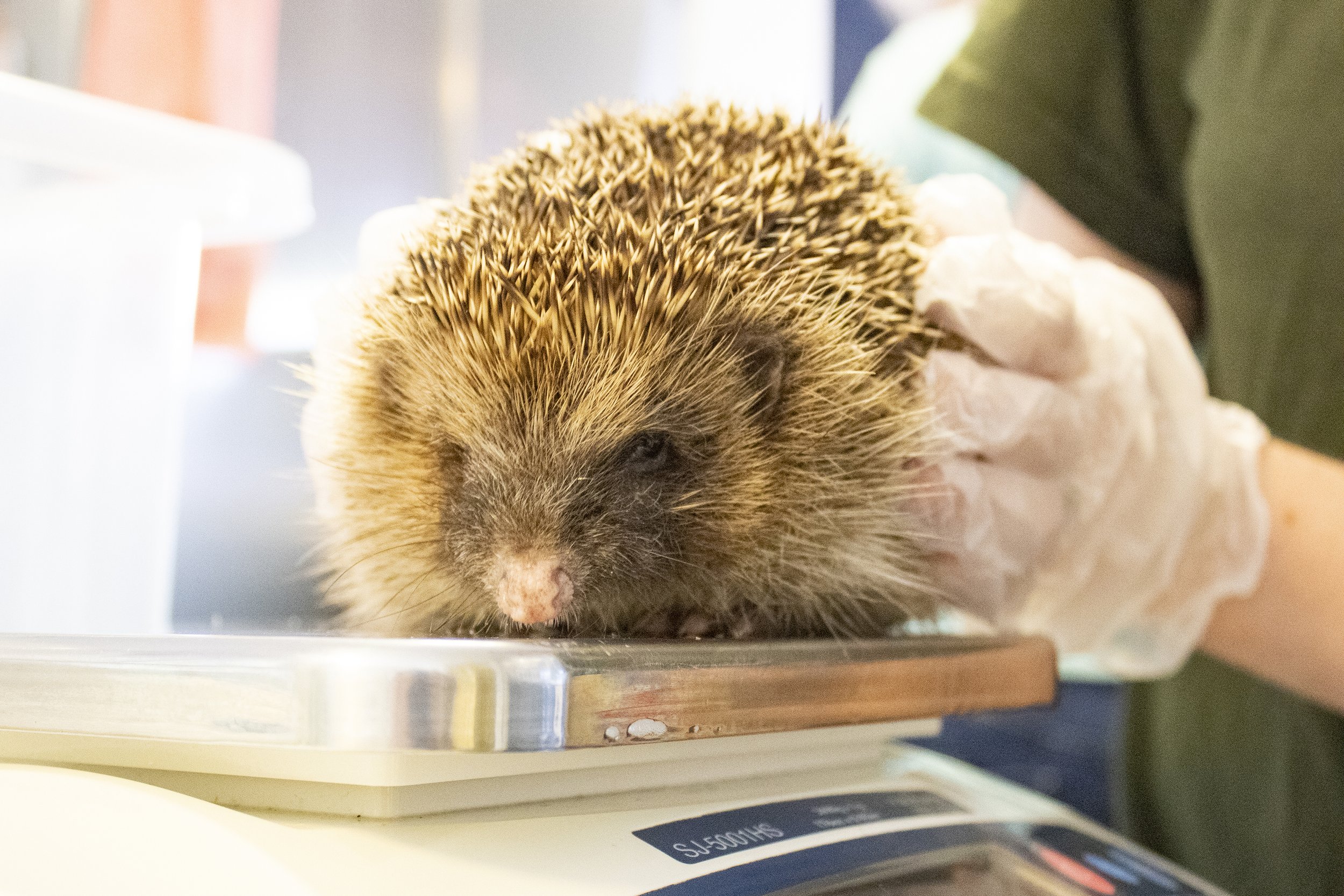
Anatomy
Size
A fully grown, healthy adult hedgehog will be around 20-25 cm long and weigh around 800-1100g.
Colouration
Creamy brown spines, brown-grey fur on face and underside. Can vary from dark brown through to pale, and can sometimes be found lacking in pigment (leucistic) or have no pigment (albino).
Spines
On average an adult has 5,000 – 7,000 sharp spines made of keratin, the same material as your nails or hair. Each spine is around 2-3cm long and lasts about a year before it is shed and replaced by a new one.
Tail
A little tail usually between 2cm long.
Legs
Surprisingly long legs, about 10cm, which means they can run faster than we can walk.
Feet
Five toes on each foot, and each toe has a powerful claw used for digging. The front feet are sometimes used to de-slime slugs.
Senses
Poor eyesight but a great sense of smell and hearing.
Other Characteristics
Faintly visible central parting of the spines at the crown of the head, short ears, and a well-developed big toe on the hind foot.
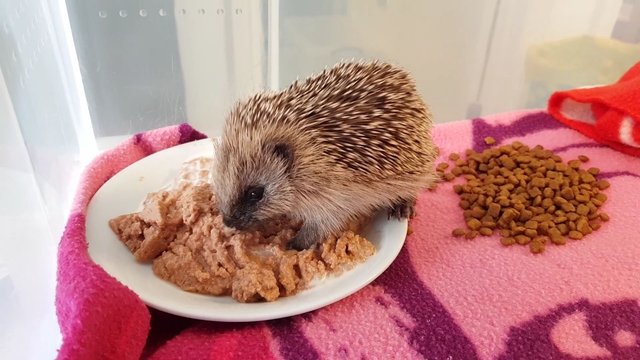
Breeding and Offspring
Young
Baby hedgehogs are called hoglets or urchins. A female will typically have 4-5 hoglets per litter, but it can be up to 7.
Breeding
Mating usually begins in May, with males circling the females making rhythmic ‘huffing’ noises. After mating the male leaves and does not have anything to do with raising young.
Gestation
The females are pregnant for around 35 days.
Litters
The first little is typically born around June, although with milder winters causing shorter hibernations, we are starting to see them as early as the end of April.
Often the European hedgehog has a late litter in September/October producing what are commonly called ‘Autumn Juveniles’. These late-born hoglets have a tough time getting to a healthy weight before the cold weather (hibernation period) occurs.
Hoglet Stages
Born with no spines and weighing 12-20g, they start to go out with mum on short foraging trips when they are around 3 weeks old, and are independent by 8 weeks of age weighing around 250g+. Download the PDF above to see the significant stages of development.

